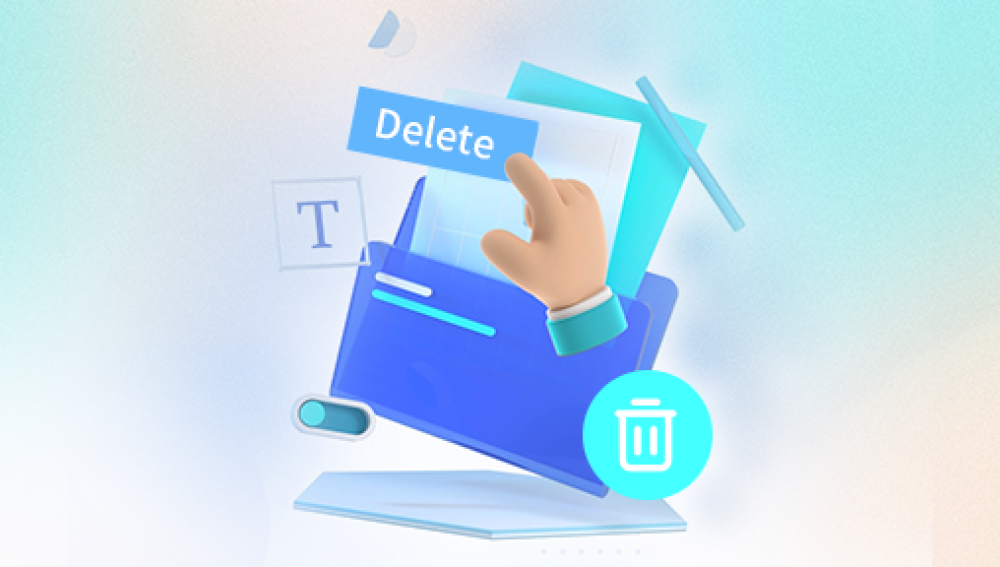Videos capture our most important memories birthdays, weddings, family vacations as well as professional milestones, cinematic projects, tutorials, and business presentations. Losing a video to corruption can be heartbreaking or costly. Whether it's a wedding shoot that won't open or travel footage that suddenly shows errors, corrupted video files can seem like a nightmare. Fortunately, all is not lost.
Corruption doesn’t always mean the video is gone forever. With the right tools, techniques, and understanding, many corrupted video files can be repaired and recovered.
Corruption refers to the damage or alteration of a video file’s structure or data. This can prevent it from playing properly or at all. The file might freeze, show errors, skip frames, lose audio, or simply fail to open. Some corrupted files still appear with their original size and extension, making the issue even more confusing.

Common Causes of Video Corruption:
Sudden Interruption During Recording
Power loss, low battery, or sudden shutdown of the device during recording can damage the file header or metadata.
Improper Ejection of Storage Devices
Removing SD cards or USB drives without safely ejecting them can interrupt the writing process.
Virus or Malware Infection
Some malicious software targets or alters media files.
Software Glitches or Crashes
Video editors or players that crash during use may corrupt files they were handling.
Bad Sectors on Drives
Physical damage or aging can cause sections of a hard drive or memory card to become unreadable.
Failed Transfers or Downloads
Interruptions during file copying, moving, or downloading may result in an incomplete or corrupted video.
Compression Errors
When converting or compressing video, file damage can occur if the process is not completed successfully.
Symptoms of a Corrupted Video File
Corrupted videos don’t always look the same. Here are the most common signs your video file may be damaged:
The video doesn’t open at all.
Audio plays but the screen is black.
The video freezes or skips during playback.
Visual artifacts appear—such as green screens, pixelation, or distortion.
Error messages like:
“File format not supported.”
“Cannot render the file.”
“The file is corrupted or unreadable.”
“Video codec not found.”
If you’ve encountered one or more of these issues, there’s a high chance the video is corrupted—but don’t panic. Let’s explore how to fix it.
Step-by-Step: How to Recover Corrupted Video Files
Step 1: Try Playing the File in a Different Media Player
Before assuming your file is corrupted beyond repair, test it in a few different players.
VLC Media Player – Known for its ability to play even partially corrupted files.
PotPlayer or KMPlayer – These players can sometimes bypass errors.
MPC-HC (Media Player Classic – Home Cinema) – A lightweight alternative that handles many formats.
If one player works, you may not need to repair the file at all—just convert or re-save it in a stable format.
Step 2: Repair the File Using VLC’s Built-in Repair Feature
VLC has a useful built-in feature for repairing damaged AVI files.
Open VLC Media Player.
Click Tools > Preferences.
Go to the Input/Codecs tab.
Find Damaged or incomplete AVI file and set it to Always fix.
Save changes and try reopening the file.
Note: This works best for AVI files. For MP4. MOV, or other formats, you’ll need dedicated repair tools.
Step 3: Use Dedicated Video Repair Software
Drecov Data Recovery
Video files are often large and complex, which makes them susceptible to corruption due to various reasons such as interrupted transfers, storage device failures, software crashes, or malware attacks. When your important videos become corrupted and refuse to play, Drecov Data Recovery offers a reliable and user-friendly solution to restore them.
Drecov Data Recovery is designed to scan your storage devices whether it’s a hard drive, USB stick, SD card, or memory card to locate damaged or corrupted video files. It supports a wide range of popular video formats like MP4, MOV, AVI, and MKV, ensuring compatibility with most of your recordings, including those from smartphones, cameras, and drones.
The recovery process starts with a thorough deep scan that digs beyond the surface to find video fragments and metadata, reconstructing damaged files as fully as possible. Drecov Data Recovery’s advanced algorithms can detect and repair issues such as broken headers, missing indexes, and partial data corruption, which are common causes behind unplayable videos.
What makes Drecov Data Recovery stand out is its ease of use: even users with minimal technical expertise can initiate scans, preview recoverable files, and restore videos in just a few clicks. It offers the option to save recovered videos to a different storage location, preventing accidental overwriting and further damage.
Step 4: Convert the Video Format
Sometimes, corruption can be bypassed by converting the video to a different format. This works especially well if the damage is minor.
Using VLC:
Open VLC.
Go to Media > Convert / Save.
Add the corrupted file.
Click Convert / Save, then choose an output format like MP4.
Start the conversion.
If the file plays after conversion, save a copy and consider it recovered.
Other Conversion Tools:
HandBrake
FFmpeg (Command Line)
Any Video Converter
Step 5: Restore from Backup or Cloud Storage
Before diving into deeper repairs, check your backups:
Windows File History
Time Machine (macOS)
OneDrive, iCloud, Google Drive, Dropbox
Camera or mobile cloud sync tools (e.g., Samsung Cloud, Google Photos)
You may find a clean version of the file from an earlier date that isn’t corrupted.
Step 6: Try Command-Line Tools (Advanced)
For tech-savvy users, command-line utilities like FFmpeg offer powerful recovery options.
Example: Fixing a Corrupted MP4 with FFmpeg
css
CopyEdit
ffmpeg -i corrupted.mp4 -c copy output.mp4
This copies the stream data to a new container, bypassing some forms of corruption.
Rebuilding Missing Indexes:
go
CopyEdit
ffmpeg -i corrupted.mp4 -f mp4 -vcodec copy -acodec copy -movflags faststart fixed.mp4
This can help fix fast-forward or skipping issues.
Step 7: Recover the Original Video File Again
If the corruption occurred during recovery from a crashed drive or deleted file, consider repeating the recovery process using more advanced settings or tools.
Recommended Recovery Tools:
Drecov Data Recovery
Make sure to use deep scan mode and look for fragmented or RAW video file types. Recover the file to a different drive.
Step 8: Repair Manually Using Hex Editors (Expert Mode)
For severely corrupted files, manual repair using hex editors is an option—but it requires technical skill.
Use a tool like HxD (Windows) or Hex Fiend (macOS).
Compare the corrupted video with a healthy file of the same format and source.
Copy missing header or footer information.
Save the modified file and test in VLC or FFmpeg.
This method can rescue files where software tools fail, but it comes with risks—make a backup first.
Special Cases: Fixing Videos from Specific Devices
GoPro and Action Cameras
Use GoPro’s Quik App or Video Repair Tool tailored to MP4s.
GoPros save recovery data in .LRV or .THM formats—these may help rebuild corrupted clips.
Drones (DJI, etc.)
Use the drone’s desktop software to try recovering auto-saved versions.
Tools like DJI Assistant 2 or DJI GO may retain temporary files.
DSLR or Mirrorless Cameras
Record a short sample video on the same device.
Use that sample in a repair tool as a reference for structure and codec info.
When to Use a Professional Recovery Service
If:
The storage device is physically damaged
The corruption is due to a crash during editing or recording
Recovery software fails repeatedly
...consider a professional data recovery lab. These services use forensic tools and cleanroom environments to recover and rebuild lost data. They are more expensive but often succeed where software cannot.
Tips to Prevent Future Corruption
Avoid Interrupting Recording: Always let recordings stop naturally.
Safely Eject Drives: Use the “eject” function before removing SD cards or USBs.
Keep Devices Charged: Prevent shutdowns during use.
Use Reliable Storage: Choose branded, high-speed SD cards and drives.
Regular Backups: Store copies on external drives or cloud storage.
Update Firmware: Keep devices and software up to date.
Use Surge Protectors: For PCs and editing setups, power spikes can cause crashes mid-process.




